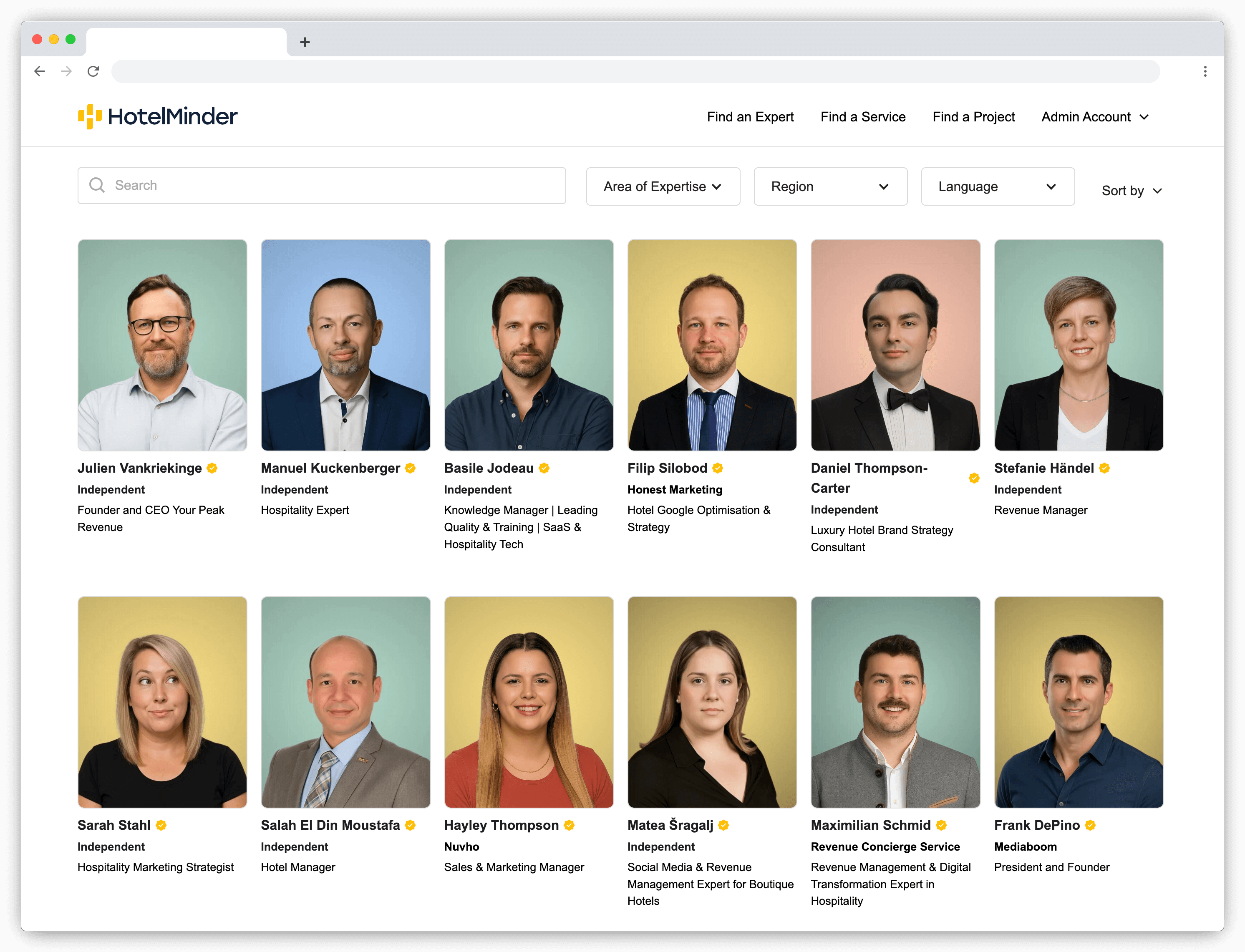7 Steps to Build a Reliable and Stress-Free Hotel Forecast
Stop guessing your demand. Learn the simple 7-step guide to hotel forecasting to build reliable budgets, optimize your pricing, and take control of your revenue.
 Written by
Juliana Hahn
in
Content Marketing
Written by
Juliana Hahn
in
Content Marketing You’ve probably heard or seen advice along these lines on LinkedIn and hotel marketing publications: “Go tell your hotel’s story, it’s great for building your brand and driving bookings.”
And that’s true. Storytelling is a valuable tool. It can draw in your audience, set your property apart from others and get site visitors to reserve a room.
But how do you make your stories so compelling, they get people to hit ‘book now’?
For that, you need three key building blocks.
Read on to discover what they are and how to use them to build a compelling story.
In case you missed part one of this three-article series on storytelling, here’s a short rundown of the main points.
Now that we’ve revised why it’s such a powerful tool, let’s look at the three building blocks needed for riveting storytelling.
You know this from your own experience: the online space is loud and there’s endless content fighting for your attention.
Your ideal potential guests feel the same way.
That’s why it’s even more important to make your content stand out and seize their attention. Studies show that you only have eight seconds to achieve this. On average, that’s all the time you get to convince a site visitor to stay on your website instead of bouncing.
That means a catchy intro, i.e. a hook, is crucial. It must immediately show people that they’re in the right place.
Here are three ways to grab and hold your audience’s attention:
The same principles apply to social media. Use your posts and captions to highlight the USPs your audience is most interested in. Again, you have little time to draw them in, so make your visuals stand out and spark their curiosity with the first few lines of your captions to keep them reading.
If you get this right, you’ll activate your audience’s imagination and get them to start dreaming of a stay at your property.
With HotelMinder, match with vetted hotel experts to solve your operational problems.

Your website and social media aim to draw in your target audience and, ideally, get them to book. But while your goal is to position your property as the perfect choice, your stories and marketing messages aren’t just about your hotel. They’re about your guest – the main character at your hotel and in your stories.
Your property offers the physical setting for the story. Think of it as the stage. But the stories themselves revolve around your clients and things they can do, experience and see during their time with you (on your stage). Focus on those points to forge a connection with your audience.
If you want to do this effectively, of course you need to know your target market’s desires, needs and interests. Guest personas can help you better understand the different groups that make up your audience. Of course, you don’t have to stick with a pre-set persona. If you attract different types of guests, create your own avatars that work with your target market.
Going through this process will help you understand what each guest segment needs and expects from you. Use this knowledge to create content and stories that show what exactly you can do for them. After all, that’s what people are most interested in when they visit your hotel website.
Here’s an example of how that could look:
On-site, it has a bar and pool as well as conference facilities boasting all the latest audio-visual equipment. On top of that, the property regularly adopts new sustainable business practices like measures to reduce food waste and a partnership with Hotels for Trees.
This event as well as the venue are supposed to impress attendees and boost the organizer’s reputation as an industry leader. The goal is also to show that steps were taken to minimize the function’s environmental impact.
→ Use storytelling to
First, there’s the question of your hotel’s why. Why are you in business? Sure, the most obvious answer is “to sell rooms and make a profit.” But think beyond that. What do you offer guests and how does that make a difference for them? Understanding this will help you craft a story your ideal guest can relate to. It’ll also reflect your hotel’s core values. That’s the foundation for forging a strong connection with your target audience.
Second, purpose also plays an important role in storytelling and content creation. Whenever you work on content that tells your story, you should know the why behind it.
To get clear on that, ask yourself these questions when you’re putting together your stories:
Checking off these boxes helps you stay consistent in your storytelling and maintain a clear theme and style throughout your online presence.
If you omit this step, you risk going off course with your content. That can result in creating a muddled image of your property and brand. That may confuse your audience and leave them unsure about whether you’re the right choice.
Now that you know three crucial elements of storytelling, you can make your brand narrative more compelling and relatable for your target audience – an important step to getting more of them to book with you.
You might still be wondering what stories to tell about your hotel though. That’s what we’ll look at in the final part of this article series: where your property’s best stories are hiding and how to share them with your audience.
Juliana Hahn is a content creator and copywriter specialized in the hospitality and tourism industry.
HotelMinder brings value to hoteliers through a Knowledge Hub, a Technology Marketplace and one-to-one hotel management consulting services. With our 50+ years of combined expertise, we provide actionable solutions to critical business challenges, while establishing a relationship based on trust, engagement and mutual benefit. We help hotels meet and exceed their business goals through an in-depth analysis of consumer insights, business requirements and opportunities.
We are excited to announce the launch of Lobby, a brand-new network of hospitality consultants, which connects hospitality industry decision-makers with carefully vetted hospitality experts to deliver faster, more effective, actionable solutions to hoteliers’ top problems – launching to the public in October 2025.
If you are a hotelier who needs support, information or advice, or a hospitality industry expert who wants to help hoteliers achieve their business goals, you can enter the Lobby for free.
Your trust is our top priority. Whether you're choosing technology or connecting with an expert, we're committed to transparency. Here’s how we ensure you get unbiased, reliable guidance. Learn more about our promise.
Browse Knowledge Hub
Check out the latest insights, news and articles from the HotelMinder team, industry leading technology vendors and hospitality consultants.
Stop guessing your demand. Learn the simple 7-step guide to hotel forecasting to build reliable budgets, optimize your pricing, and take control of your revenue.
A hotel consultant debunks 3 common hotel technology myths. Learn why new tech isn't always the answer & how to truly optimize hotel operations for profit.
Access world-class hospitality expertise with Lobby. Our on-demand hotelier expert network offers proven solutions for revenue management, marketing, and technology challenges. Join free.
Learn Generative Engine Optimization (GEO) to boost your hotel's visibility on AI platforms like ChatGPT. Our guide covers websites, reviews, and OTAs. Get seen.
Discover more insightful articles in our Knowledge Hub and Partners Hub.
Sign up for expert insights, exclusive offers, and real solutions made for hoteliers like you.